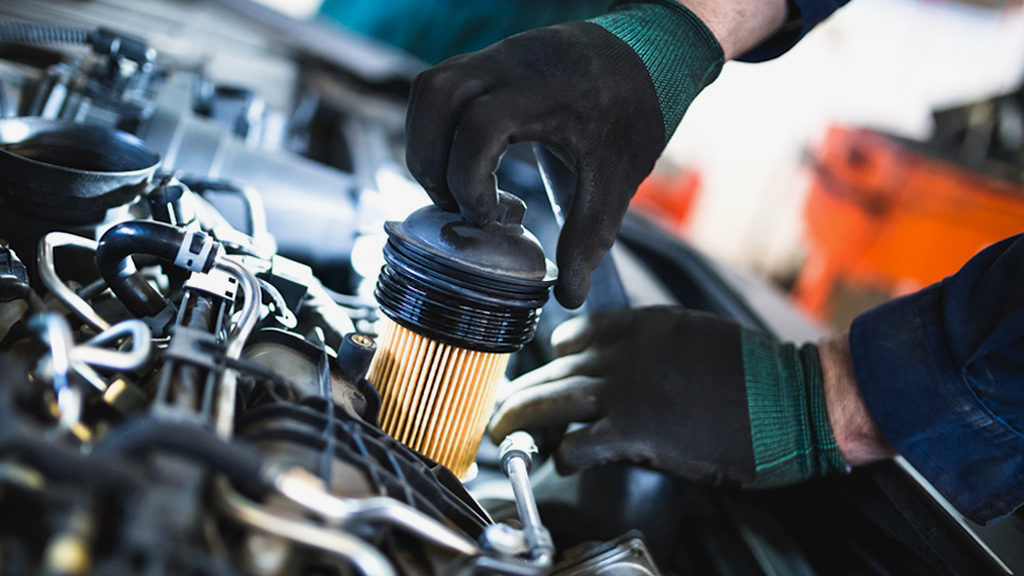Why You Should Check Your Oil for Metal
“Checking your oil” usually means looking at the oil level by looking at your engine’s dipstick. But there are far more thorough ways to check your oil that can provide insights into your engine’s condition. And they don’t require a lot of extra time or money.
Comprehensive inspection of your used oil and oil filter media for metal deposits is the most cost-effective early warning system possible when it comes to the overall health of your engine. By doing these checks every time you change your oil, you can catch potential engine problems well before they snowball into a dire situation. Documentation of these efforts is the sign of fastidious a owners and can boost your resale value.
Here’s everything a DIYer needs to know.

Engine Wear Produces Metal
When an engine wears, it produces metal deposits. These deposits, also called “wear metals,” are swept up by the oil that courses through your engine. That’s oil’s job.
The engine’s oil filter catches a lot, but not necessarily all, of the wear metals and prevents them from circulating within your engine and wreaking havoc. Much of this metal collects in the oil pan. However, finer wear metals will stay suspended in the oil itself.
A certain amount of engine wear is completely normal and expected. Even the most modern engines have a “break-in” or “run-in” period wherein the piston rings conform to the cylinder bores. Some manufacturers perform this run-in process on their engines before delivering the car to the dealer, but not all. That’s why doing an early oil change on a new car, or a new or rebuilt engine, remains a sound idea.
After the run-in process is complete, a healthy engine should produce few wear metals. Stuff happens, though, and engines can suffer from abnormal wear.
How to Check for Wear Metals
Checking for wear metals is the most direct way to catch potential problems well before they become catastrophic. An easy way to do this is by cutting open the oil filter after every oil change and examining what’s inside.
The part of the oil filter that actually does the filtering is called the filter media. It’s the heart of the filter – the papery-looking stuff that’s folded into pleats. Microscopic pores allow oil to flow through, while catching any debris that are larger than the pores. Those bits remain lodged in the pleats of the media.
Cut open the oil filter using a dedicated oil filter cutter, available for as little at $20. You’ll want to avoid using powered cutoff wheels, hacksaws or Dremels that can introduce additional metal particles.
Remove the flange and dump the filter’s contents into a clean pan. The oil might have a pearlescent luster you can see in direct light. This luster indicates the presence of tiny metallic particles that are made of iron and/or aluminum, typically from the cylinder walls, pistons and rings. Excessive particles or a sudden increase in their concentration once an engine has been run may indicate damage.
Next, get another clean tray and cut off the ends of the filter media cartridge with a dedicated oil filter media cutter, which are available for about $60. A razor knife will work too. Pull the media out, lay the pleats flat and look closely at the nooks and crannies.

What will you find and what does it mean?
Shiny, hard, non-magnetic silvery pieces trapped in the pleats are aluminum, possibly from the pistons, block or heads (unless your engine uses cast iron in those areas). Modern rod and main bearings have an aluminum alloy layer, too. Older bearings will have tin and lead. Very fine filings of aluminum could be from a piston that is being “fretted” by a broken piston ring.
Soft, dark deposits are usually carbon and can indicate excessive blow-by. But solid, dark pieces are usually iron or steel and can be from piston wrist pins or rings, timing equipment (chain, sprockets, etc.) or valvetrain components. Running a clean magnet over the pleats will pick up iron and steel to give you a closer look. Also, check for chunks that have settled at the bottom of the oil drain pan, too.
If you see any of these fragments, you probably have a serious issue that will continue to get worse and ultimate lead to mass destruction, so start planning for an engine teardown. In the meantime, invest in a magnetic oil drain plug ($6-$35) for your oil pan, which will act as a supplementary device to catch certain bits.
Oil Analysis will provide peace of mind
Sending a sample of your used engine oil to an oil analysis lab provides even deeper insights and costs less than $50. Every wear metal concentration is reported numerically, allowing you to track changes in your engine’s condition over time.
Still have questions about oil analysis? Speak to one of our Tinker Experts today!
###



